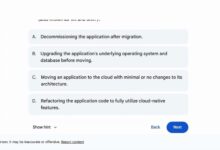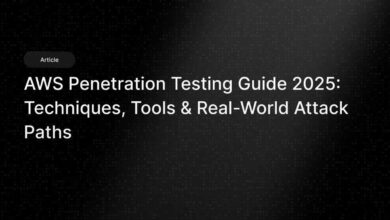AWS Bedrock: 7 Powerful Features You Must Know in 2024
Imagine building cutting-edge AI applications without managing a single server. That’s exactly what AWS Bedrock makes possible—unlocking the future of generative AI with simplicity, speed, and scalability.
What Is AWS Bedrock and Why It Matters

Amazon Web Services (AWS) has long been a leader in cloud computing, and with the launch of AWS Bedrock, it’s making a bold move into the generative AI space. AWS Bedrock is a fully managed service that enables developers and enterprises to build, train, and deploy foundation models (FMs) with ease. It removes the complexity traditionally associated with AI development, offering a serverless experience that scales on demand.
Defining AWS Bedrock
AWS Bedrock is a no-server platform that provides access to a wide range of high-performing foundation models from leading AI companies such as Anthropic, Meta, Amazon, and AI21 Labs. These models can be used for tasks like natural language processing, code generation, image creation, and more. The service abstracts away infrastructure management, allowing developers to focus solely on application logic and user experience.
- Provides secure, scalable access to foundation models
- Supports customization through fine-tuning and Retrieval-Augmented Generation (RAG)
- Integrates seamlessly with other AWS services like Amazon SageMaker, Lambda, and IAM
How AWS Bedrock Fits Into the AI Ecosystem
Generative AI is transforming industries—from healthcare to finance to entertainment. However, deploying large language models (LLMs) has historically required deep expertise in machine learning, significant computational resources, and complex infrastructure. AWS Bedrock democratizes access to these powerful tools by offering a streamlined interface that works for both novice developers and AI experts.
According to AWS, AWS Bedrock is designed to accelerate innovation by reducing the time it takes to go from idea to production. By providing a unified API layer across multiple models, it allows organizations to experiment and choose the best model for their use case without vendor lock-in.
“AWS Bedrock empowers every developer to become an AI innovator.” — AWS Official Blog
Key Features of AWS Bedrock That Set It Apart
What makes AWS Bedrock stand out in a crowded AI marketplace? It’s not just about access to models—it’s about how AWS integrates them into a secure, flexible, and enterprise-ready environment. Let’s explore the core features that define its value proposition.
Serverless Architecture for Effortless Scaling
One of the most compelling aspects of AWS Bedrock is its serverless nature. This means you don’t need to provision or manage any underlying infrastructure. The service automatically scales to handle traffic spikes, whether you’re processing one request or millions per second.
- No need to manage GPUs or clusters
- Pay only for what you use (per token)
- Instant deployment with minimal configuration
This architecture is particularly beneficial for startups and small teams that lack dedicated DevOps resources but still want to leverage state-of-the-art AI capabilities.
Access to Leading Foundation Models
AWS Bedrock offers a curated selection of foundation models, each optimized for different tasks:
- Claude by Anthropic: Known for its strong reasoning, safety, and long-context capabilities (up to 200K tokens)
- Llama 2 and Llama 3 by Meta: Open-source models ideal for code generation and multilingual applications
- Titan by Amazon: A suite of models for text generation, embeddings, and classification
- Jurassic-2 by AI21 Labs: Excels in creative writing and complex instruction following
Developers can switch between models using a consistent API, enabling rapid experimentation and A/B testing. This flexibility is a game-changer for businesses looking to optimize performance and cost.
Customization Through Fine-Tuning and RAG
While pre-trained models are powerful, they often need to be adapted to specific domains or business needs. AWS Bedrock supports two primary methods of customization:
- Fine-tuning: Adjust a base model using your proprietary data to improve accuracy on domain-specific tasks (e.g., legal document analysis, medical diagnosis support)
- Retrieval-Augmented Generation (RAG): Combine the model’s generative power with real-time data retrieval from your knowledge base, ensuring responses are accurate and up-to-date
For example, a financial institution could use RAG to pull the latest market data before generating investment summaries, reducing hallucinations and increasing trust in AI outputs.
How AWS Bedrock Compares to Competitors
The generative AI landscape is crowded, with players like Google Vertex AI, Microsoft Azure AI, and open-source frameworks like Hugging Face. So, how does AWS Bedrock stack up?
vs Google Vertex AI
Google Vertex AI offers similar access to foundation models, including its own PaLM 2 and Gemini models. However, AWS Bedrock has a broader partner ecosystem, integrating models from Anthropic and Meta that aren’t natively available on Vertex.
- AWS Bedrock supports more third-party models out of the box
- Vertex AI has tighter integration with Google Workspace and BigQuery
- Bedrock’s pricing model is more transparent (per token), while Vertex uses a mix of compute and API costs
For organizations already invested in the AWS ecosystem, Bedrock offers a smoother integration path.
vs Microsoft Azure OpenAI Service
Microsoft’s Azure OpenAI Service provides access to models like GPT-4, which are not available on AWS Bedrock. However, this comes with significant limitations:
- Limited model diversity (primarily OpenAI models)
- Stricter access controls and approval processes
- Less flexibility in model switching
In contrast, AWS Bedrock offers a more open marketplace of models, giving developers greater freedom to innovate. Additionally, AWS’s global infrastructure provides lower latency in more regions than Azure.
vs Open-Source Frameworks
While platforms like Hugging Face offer unparalleled model variety, they require significant technical expertise to deploy and secure at scale. AWS Bedrock bridges the gap by offering open models (like Llama) in a fully managed environment.
- Hugging Face: Maximum flexibility but high operational overhead
- AWS Bedrock: Balanced approach—flexibility with enterprise-grade security and scalability
For most enterprises, the trade-off favors AWS Bedrock, especially when compliance, security, and uptime are critical.
Use Cases: Real-World Applications of AWS Bedrock
AWS Bedrock isn’t just a theoretical platform—it’s being used today across industries to solve real business problems. Let’s look at some compelling use cases.
Customer Service Automation
Companies are using AWS Bedrock to power intelligent chatbots that understand complex queries and provide accurate, context-aware responses. For example, a telecom provider might use Bedrock to handle billing inquiries, service outages, and plan upgrades—all without human intervention.
- Reduces customer wait times
- Lowers operational costs
- Improves satisfaction through 24/7 availability
By integrating with Amazon Connect, businesses can deploy voice and text-based AI agents that feel natural and helpful.
Content Generation at Scale
Marketing teams are leveraging AWS Bedrock to generate product descriptions, blog posts, social media content, and ad copy. With fine-tuned models, they can maintain brand voice and tone across thousands of outputs.
- Generates SEO-optimized content in minutes
- Supports multilingual campaigns
- Integrates with CMS platforms via APIs
A retail company could use Bedrock to automatically create personalized email campaigns based on user behavior, increasing conversion rates.
Code Generation and Developer Assistance
Using models like CodeLlama (available via Bedrock), developers can generate boilerplate code, debug errors, and even write unit tests. This accelerates development cycles and reduces cognitive load.
- Autocompletes functions based on comments
- Explains legacy code in plain language
- Generates API documentation automatically
Teams using AWS CodeWhisperer (which leverages Bedrock under the hood) report up to 30% faster coding speeds.
Security, Compliance, and Governance in AWS Bedrock
For enterprises, adopting AI isn’t just about performance—it’s about trust. AWS Bedrock is built with security and compliance at its core, making it suitable for regulated industries like finance, healthcare, and government.
Data Privacy and Encryption
All data processed by AWS Bedrock is encrypted in transit and at rest. AWS does not retain customer prompts or model outputs for training purposes, ensuring that sensitive information stays private.
- End-to-end TLS encryption
- Customer-managed keys (CMK) via AWS KMS
- No persistent storage of input/output data
This is critical for organizations handling personally identifiable information (PII) or protected health information (PHI).
Identity and Access Management
AWS Bedrock integrates with AWS Identity and Access Management (IAM), allowing granular control over who can access which models and features.
- Role-based access control (RBAC)
- Multi-factor authentication (MFA) support
- Audit trails via AWS CloudTrail
Administrators can define policies that restrict model usage to specific departments or projects, preventing misuse.
Compliance Certifications
AWS Bedrock complies with major regulatory frameworks, including:
- GDPR (General Data Protection Regulation)
- HIPAA (Health Insurance Portability and Accountability Act)
- SOC 1, SOC 2, and SOC 3
- ISO 27001, ISO 9001, ISO 27001
These certifications make it easier for organizations to adopt AWS Bedrock without undergoing lengthy compliance reviews.
Getting Started with AWS Bedrock: A Step-by-Step Guide
Ready to try AWS Bedrock? Here’s how to get started in five simple steps.
Step 1: Enable AWS Bedrock in Your Account
By default, AWS Bedrock is not enabled. You must request access through the AWS Console. Navigate to the Bedrock service page and click “Request Access.” Approval is typically granted within minutes for most regions.
- Go to AWS Bedrock Console
- Select the models you want to use (e.g., Claude, Llama)
- Submit your request
Step 2: Set Up IAM Permissions
Create an IAM policy that grants access to Bedrock APIs. Here’s a sample policy:
{
“Version”: “2012-10-17”,
“Statement”: [
{
“Effect”: “Allow”,
“Action”: [
“bedrock:InvokeModel”,
“bedrock:ListFoundationModels”
],
“Resource”: “*”
}
]
}
Attach this policy to your user or role to enable API access.
Step 3: Choose and Test a Model
Use the AWS CLI or SDK to invoke a model. Here’s an example using Python and Boto3:
import boto3
client = boto3.client(‘bedrock-runtime’)
response = client.invoke_model(
modelId=’anthropic.claude-v2′,
body='{“prompt”: “nHuman: Explain quantum computingnnAssistant:”, “max_tokens_to_sample”: 300}’
)print(response[‘body’].read().decode())
This will return a generated explanation of quantum computing. Experiment with different prompts and models to see which performs best for your use case.
Step 4: Integrate with Your Application
Once you’ve tested the model, integrate it into your application. Common integration points include:
- Web apps via API Gateway and Lambda
- Mobile apps using AWS Amplify
- Internal tools using React or Angular frontends
Ensure you implement rate limiting and error handling to maintain reliability.
Step 5: Monitor and Optimize
Use Amazon CloudWatch to monitor invocation metrics like latency, error rates, and token usage. Set up alarms for anomalies and optimize prompts to reduce costs.
- Track cost per thousand tokens
- Use caching for repetitive queries
- Implement prompt engineering best practices
Future of AWS Bedrock: Trends and Roadmap
AWS Bedrock is evolving rapidly. Based on recent announcements and industry trends, here’s what we can expect in the coming years.
Expansion of Model Marketplace
AWS is likely to onboard more AI startups and research labs, increasing the diversity of available models. Expect specialized models for verticals like legal, education, and engineering.
- More multimodal models (text + image + audio)
- Real-time streaming models for interactive applications
- Smaller, efficient models for edge deployment
Enhanced Customization Tools
Future updates may include no-code interfaces for fine-tuning and RAG, making AI customization accessible to non-technical users.
- Drag-and-drop data connectors for RAG
- Automated hyperparameter tuning
- Versioning and rollback for custom models
Tighter Integration with AWS Ecosystem
Expect deeper integration with services like Amazon Q (AWS’s AI-powered assistant), SageMaker, and AWS Lambda.
- Seamless handoff between Bedrock and SageMaker for advanced training
- Event-driven AI workflows using EventBridge
- Unified billing and governance across AI services
These enhancements will solidify AWS Bedrock’s position as the central hub for AI innovation on AWS.
Common Challenges and How to Overcome Them
While AWS Bedrock simplifies AI adoption, it’s not without challenges. Here are common issues and how to address them.
Model Hallucinations
Even the best LLMs can generate incorrect or fabricated information. To mitigate this:
- Use RAG to ground responses in verified data
- Implement validation layers (e.g., fact-checking APIs)
- Set clear system prompts that emphasize accuracy
Cost Management
Token-based pricing can lead to unexpected costs if not monitored. Best practices include:
- Set budget alerts in AWS Budgets
- Use smaller models for simple tasks
- Cache frequent responses
Prompt Engineering Complexity
Getting the best output requires skillful prompt design. Invest in training or use tools like Amazon Bedrock Agent to simplify prompt creation.
- Use few-shot prompting for consistency
- Test prompts iteratively
- Leverage prompt templates from AWS samples
What is AWS Bedrock?
AWS Bedrock is a fully managed service that provides access to foundation models for building generative AI applications without managing infrastructure. It supports models from Anthropic, Meta, Amazon, and others.
Is AWS Bedrock serverless?
Yes, AWS Bedrock is a serverless platform, meaning you don’t need to provision or manage any servers. It automatically scales based on demand and charges per token used.
Can I fine-tune models on AWS Bedrock?
Yes, AWS Bedrock supports fine-tuning of foundation models using your own data to improve performance on specific tasks or domains.
Which models are available on AWS Bedrock?
AWS Bedrock offers models like Claude (Anthropic), Llama 2 and Llama 3 (Meta), Titan (Amazon), and Jurassic-2 (AI21 Labs), with new models added regularly.
How does AWS Bedrock ensure data privacy?
AWS Bedrock encrypts data in transit and at rest, does not store customer prompts or outputs, and complies with major regulations like GDPR and HIPAA.
From its serverless architecture to its robust security model, AWS Bedrock is redefining how businesses adopt generative AI. By offering access to top-tier foundation models, seamless customization, and enterprise-grade governance, it empowers organizations to innovate faster and more safely. Whether you’re building chatbots, generating content, or automating code, AWS Bedrock provides the tools you need to succeed in the AI era. As the platform continues to evolve, staying informed and experimenting early will give you a competitive edge.
Further Reading:









